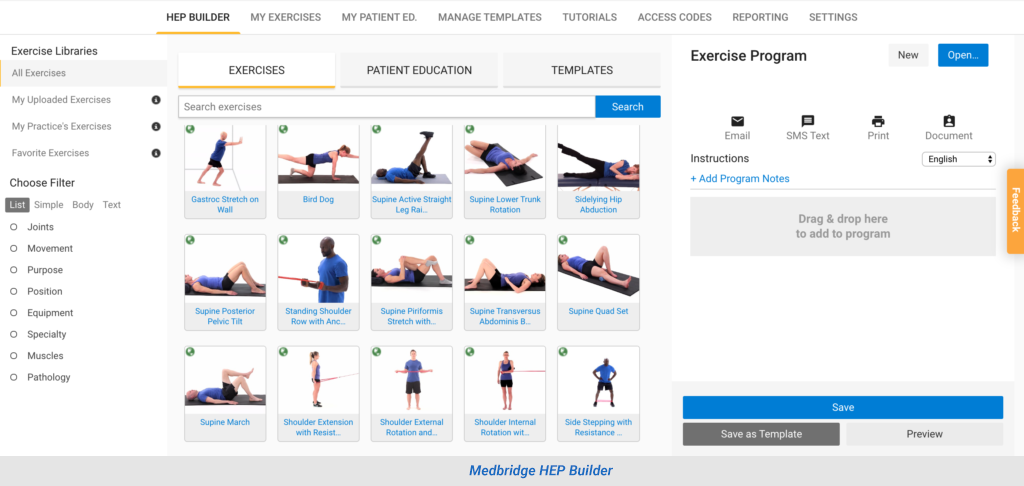Chronic Lung Disease: Exercises to Gain Strength & Breathe Easier

What’s the best way to help your patients who are living with chronic lung disease? These complex patients often have muscle wasting, decreased functional capacity, and may struggle to perform daily activities. They may find themselves so short of breath that everyday activities leave them breathless.
While living with chronic lung disease is challenging, there is hope.
New Pulmonary Exercises
MedBridge recently added and updated 70 exercises specifically designed for patients with chronic lung disease to their Home Exercise Library. Each exercise starts with proper positioning and breath to set your patient up to perform the exercise safely and effectively. Some exercises even feature patients wearing nasal cannula for supplemental oxygen to help this population feel included and better at ease when performing these exercises.
One of the major barriers to exercise program adherence is motivation. Choosing the right exercise prescription for your patients will help them achieve a higher rate of adherence and program success.
To help patients reach their goals, the exercises you prescribe should:
- Increase muscular strength
- Improve cardiovascular endurance
- Enhance ability to perform daily activities
- Improve control of breathlessness with exertion
- Increase confidence
- Promote independence
Choosing the Right Exercises
The MedBridge Home Exercise Library has nearly 7,000 exercises. You can easily search by name using the search function on the dashboard or filter using the menu on the left to find exercises specific to your patients’ needs. The new pulmonary exercises are now a part of this collection and can be found by first selecting Specialty then selecting Pulmonary.

Choosing the right exercises starts with goal setting. What are your patients’ goals? Do you have specific goals for your patients based off your clinical assessment?
Once these goals are identified, you can begin selecting the appropriate exercises.
Exercise Prescription Case Study
Today you’re seeing Katherine, a 72-year-old with severe COPD. She wears supplemental oxygen at 2 LPM during exertion. Her BMI is 19.
Katherine has been complaining of feeling weak, and says it seems like she can’t lift anything anymore. She also states that it’s hard for her to do any housework since she gets too breathless, and that she just ends up sitting instead. While she has a treadmill in her bedroom, it’s currently only serving as a storage space for clothing that is too big and no longer fits. She says she also has some three-pound hand weights somewhere. Although Katherine is taking all of her medications as prescribed—including her inhalers—she still has “coughing fits” a few times a month.
Katherine says that her goals are to:
- Feel stronger
- Clean her house again
- Walk to the mailbox and back
- Not be so breathless
- Cough easier
After carefully considering Katherine’s needs and goals, you create the following exercise plan:
- Pursed lip breathing at rest to help her learn the technique
- Treadmill walking, using the video featuring a person wearing nasal cannula, with pursed lip breathing
- Two upper body and two lower body strength-training exercises using her three-pound dumbbells, all with pursed lip breathing, choosing exercises featuring a person wearing nasal cannula, when available
- Two functional activities, such as:
- Overhead reach
- Wall squat
- Seated huff cough
Performing regular exercises that are specific to the needs of a person living with a chronic lung disease leads to positive reinforcement and gives your patient more control over the symptoms of their disease. Other considerations include encouraging regular appointments with their physician and enrolling into a pulmonary rehabilitation program, if available.
Although exercise may seem overwhelming to people with chronic lung disease, a structured, easy-to-follow exercise program, customized by you, can make all the difference in your patient’s life. A patient once told me that following a simple exercise program, as outlined above, gave her hope for an independent future. The new pulmonary exercises in the MedBridge Home Exercise Library will help you have a tremendous impact on your patients with chronic lung disease.










